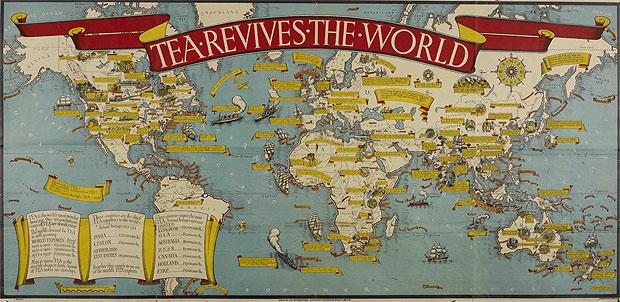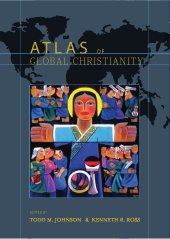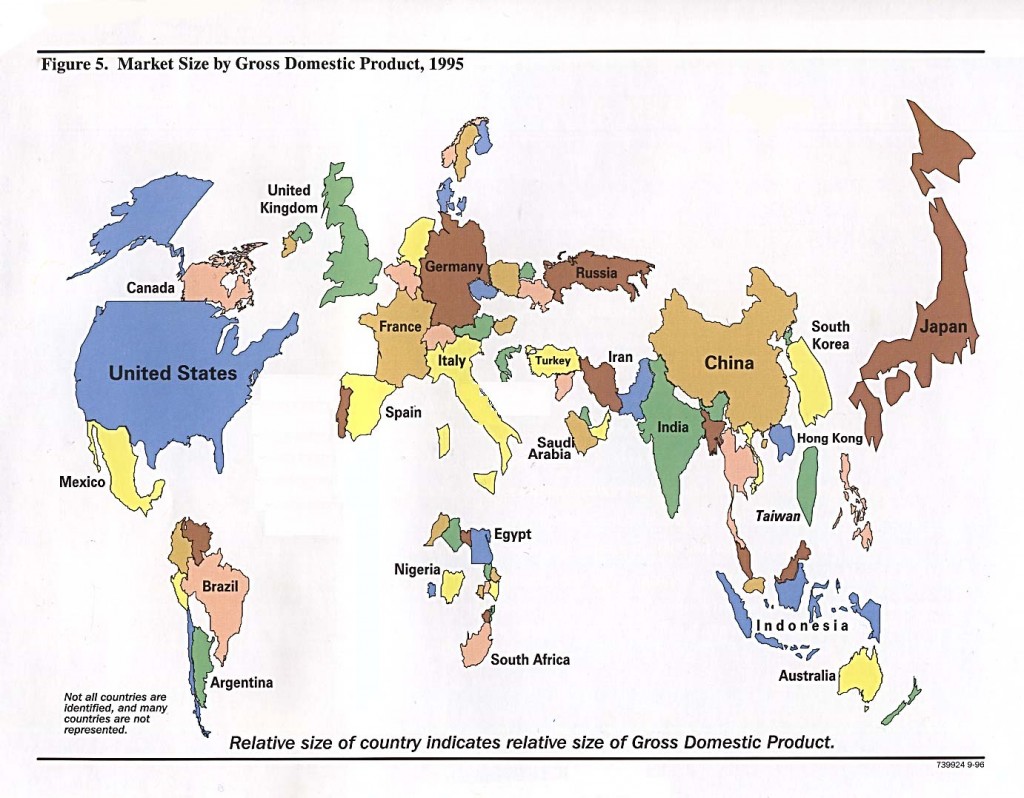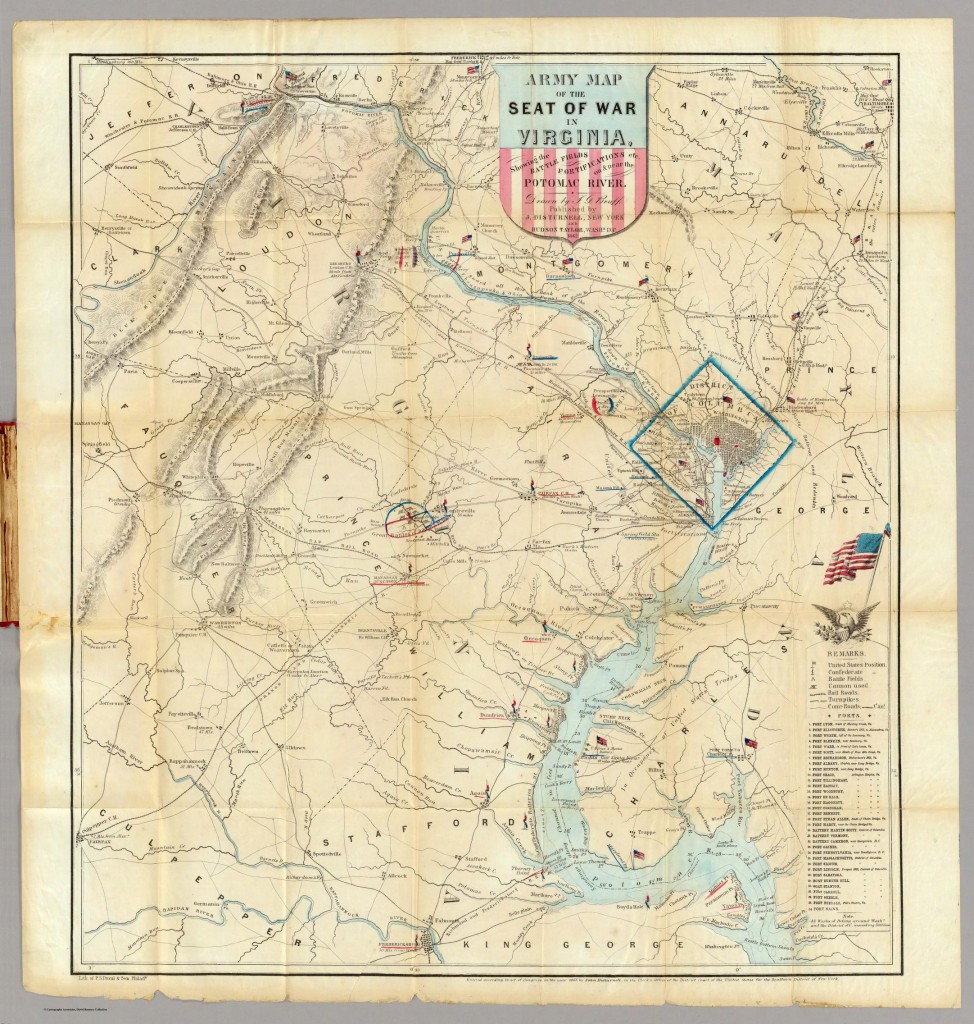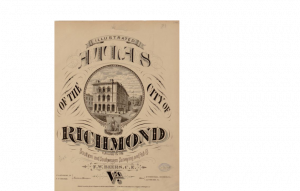From the late 1500s onward, the British Empire became one of the most dominating and powerful empires in world history. It stretched from the British Isles to Australia, and the Americas to India. Certain statistics even show that throughout the course of its history, the empire had invaded roughly 90 percent of all modern day countries at one point or another[1]. Without a doubt, it is one of the most astonishing empires ever studied in history due to its expansive influence. Following World War II, however, the empire began its decline in the form of decolonization and ceding of power to new forces such as the USSR and United States. In more modern times, the “empire” of Great Britain is often, jokingly, synonymous with soccer (football if you’re from the eastern side of the Pond), high class (think fancy British accents and monocles), and of course, tea. Rather comically, tea is considered to be a staple of the British diet but, in fact, it was also a staple of the British economy for hundreds of years as tea, in addition to textiles, predicated British dominion over colonies such as India, and facilitated trade with other colonies and territories, like the American Colonies. Though eventually a combination of tea trade and taxation cost the British Empire dearly as the American Colonies declared their freedom in 1776, tea nonetheless remained integral to British economy, culture, and society. According to British architect MacDonald Gill’s poster titled “Tea Revives the World,” published in 1940, Gill shows just how important tea was to the English people.[2] Created upon this poster is an interconnected web of tea trade and history throughout the world that captures the nostalgic British spirit of imperialism regarding the Empire’s past glory within a timeframe of the 1940s. In this way, tea is more than just a commodity to the British in the eyes of Gill; it is an economic, cultural, and political symbol to the British people of a time, before the horrors of World War II, when the British Empire was truly an empire, in every sense of the word.
At first glance at this poster, the eye of a reader is immediately drawn to the outstretched title reading “TEA REVIVES THE WORLD.” This blood red banner injects vibrant color into an otherwise dull map, attracting viewers to its message. The banner, which offers a rather bold statement, actually holds great historical context.[3] During World War II, tea was used by the British Empire on the war fronts to “revive” the spirits of the empire’s soldiers in order to boost morale on the field of battle. In this way, British soldiers were given the comforts of home and were reminded just what they were fighting for: life, country, family, and friends, as well as soccer, monocles, and tea. By using this statement as his title, Gill stakes the claim that tea is more than just a tasty, hot drink, but it is a cultural commodity that holds therapeutic value to those who drink it and has the ability to alter the outcomes of even the largest wars. Furthermore, the word choice of Gill in the title stating that tea “revives” the world, leads to a political assumption that while the British Empire was by no means its former self, it still believed itself to be the standard of class, civilization, and order in the world. Gill implies through the title of the poster, that the world may in fact need “reviving” or a re-civilization by the British given the context of World War II that was ravaging Europe, North Africa, and the Far East during this time. The title suggests that Great Britain will save the world from the darkness of Socialism and oppression that had consumed Europe in the 1940s—certainly a bold assumption and political statement.
The visual nature of the title, being that it is so large and drapes across the entire map, holds a second value too, as it pulls the globe together into a small, tightly knit community of countries woven together by tea trade. Through this projection, oceans seem like mere rivers and continents seem like leaves resting on the surface of a pond. By using a very distant view of the world, Gill is able to bind together the corners of the British Empire, as well as the world, with images of hugely enlarged steam ships and trade vessels carrying tea. These drawings help to cramp the seven seas and emphasize just how small the world is. The use of ships and other ocean going vessels is questionable, however, due to the fact that when this poster was crafted during the 1940s, the world was at the peak of the “air age.” Strangely, in a time when technological advancements led man to take to the skies in aircrafts, there are only a handful of planes that appear on the map. Instead of noting the changing trend from sea travel to air travel, Gill focuses on the oceans and naval power which was traditionally the British Empire’s greatest strength. Furthermore, the use of the Mercator projection (which was becoming increasingly outdated at this time) only adds to the very traditional nature and appearance of this map that harkens back to the strength of Great Britain in centuries past. This all occurs while the word “TEA” hovers above Earth, further stressing its effect on the world as a commodity that the entire globe desires – and as a commodity that Great Britain provides to the world.
Again in an attempt by Gill to alter the viewer’s conception of the world, the British Isles are drastically oversized in comparison to their true proportions towards Europe. This holds to the intent of the poster in showing the measurable impact that Great Britain has on the world. The proportioning of countries may also hold a significance to the fact that this poster was made during the height of World War II and was distributed to supporters of the Allied powers. In a time when maps of the world were becoming much more accessible to people, this poster could be used as a reference for the common man in understanding where the action in World War II was taking place without being overwhelmed by the many serious and intellectual wartime maps that were widely available at this time. By showing the major Allied Powers (United States, Great Britain, and the Soviet Union) as augmented in size, Gill perhaps intended to subliminally convey a hope to his audience that Allied nations held the advantage in the war when compared to the major Axis Powers (Germany and Japan), which are virtually unrecognized or shoved off the farthest edges of the poster, respectively.
In this artistically designed poster, Gill acknowledges the vast nature of Great Britain’s “tea empire,” in a number of ways, one of which is the use of a multitude of note scrolls adorning the map in several locations. Each scroll indicates either an event, or cultural connection with tea that is unique to the region it lies near on the poster. This information is presented in a very traditional fashion, complete with old-style fonts, scrolls, and ocean vessels which greatly contrasted many of the rigid and factual maps of war time strategy that were prominent in cartography of this time period. For instance, near Nova Scotia, Canada, there is a note scroll reading “Famous TEA clippers were built at Halifax (the capital of the province of Nova Scotia),” which shows the historical and industrial impact that tea created on Nova Scotia. Each note scroll shows how tea, as both an export and import, had a very formidable effect on the society in which traveled to and from. However, by focusing on a quaint and charming history of the world, the poster leaves many notable “silences,” or omissions, in its content by not highlighting the rampant industrialization and militarization present in a world that was emerged in the deadly conflict of World War II.
Though times have changed since the publication of this poster in 1940, its message remains the same in three distinct ideas: tea is important, Great Britain controls tea, and Great Britain is still “great” in comparison with the rest of Europe and the world (though ironically, Great Britain was more in debt to a foreign country than ever thanks to the military aid provided by the United States through the Lend Lease policy). Despite the events of World War II, including the bombing of London and German dominance over France and Great Britain on the mainland of Europe,[4] this poster seeks to argue the historical and economic preeminence that Great Britain held over Europe and the whole world, despite the country being badly affected by the traumas of World War II and a declining empire. Gill uses tea to show the belief that the British Empire still holds the level of excellence and dominance that it had always had over the past four centuries. In a time when the once mighty British Empire was seeing the sun set upon its former glory, Gill created this poster to give the British people a tangible item that displayed the greatness and power that the empire still had, and to reinforce the British morale during the dark days of the Second World War.
Bibliography
Laycock, Stuart. All the Countries We’ve Ever Invaded: And the Few We Never Got around to.
Gloucestershire, UK: History Press, 2012.
Tea in England, “Tea Revives the World–An Illustrated Poster from the 1940s,” blog post,
January 30, 2014, http://teainengland.com/2014/01/tea-revives-the-world-an-
illustrated-poster-from-the-1940s/
War Birds, “Introduction to the Air War During WWII” blog post, March 7, 2005,
http://warbirdsofww2.tripod.com/intro.htm
[1] Laycock, Stuart. All the Countries We’ve Ever Invaded: And the Few We Never Got around to. Gloucestershire, UK: History Press, 2012.
[2]Tea in England, “Tea Revives the World–An Illustrated Poster from the 1940s,” blog post,
January 30, 2014, http://teainengland.com/2014/01/tea-revives-the-world-an-illustrated-poster-from-the-1940s/
[3] http://teainengland.com/2014/01/tea-revives-the-world-an-illustrated-poster-from-the-1940s/
[4]War Birds, “Introduction to the Air War During WWII” blog post, March 7, 2005,
http://warbirdsofww2.tripod.com/intro.htm

